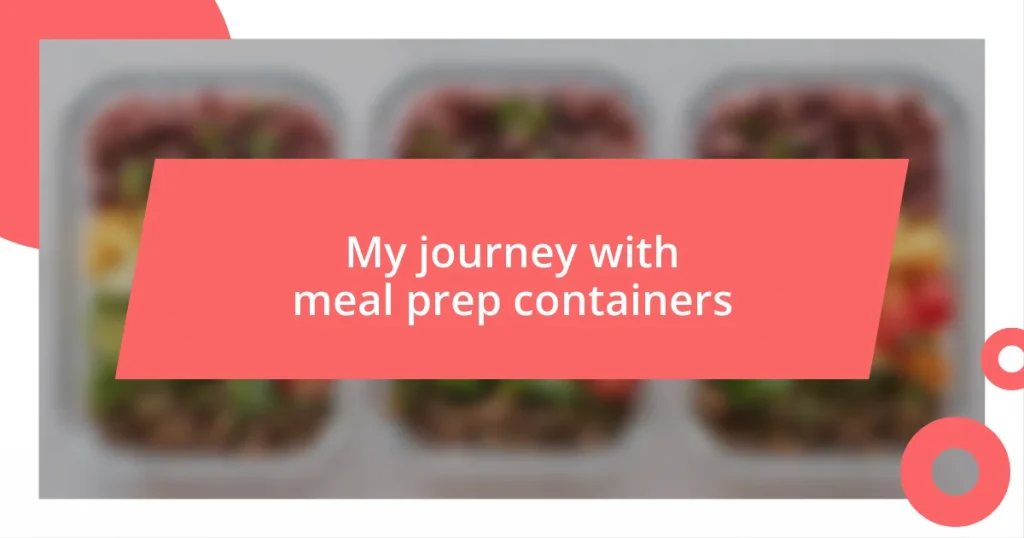Key takeaways:
- Recognizing emotional eating involves introspection, identifying triggers such as stress, boredom, and social situations.
- Implementing mindful eating practices, like the “pause practice” and slowing down during meals, enhances enjoyment and connection to food.
- Setting realistic food goals and maintaining flexibility fosters a healthier, more balanced relationship with food over the long term.
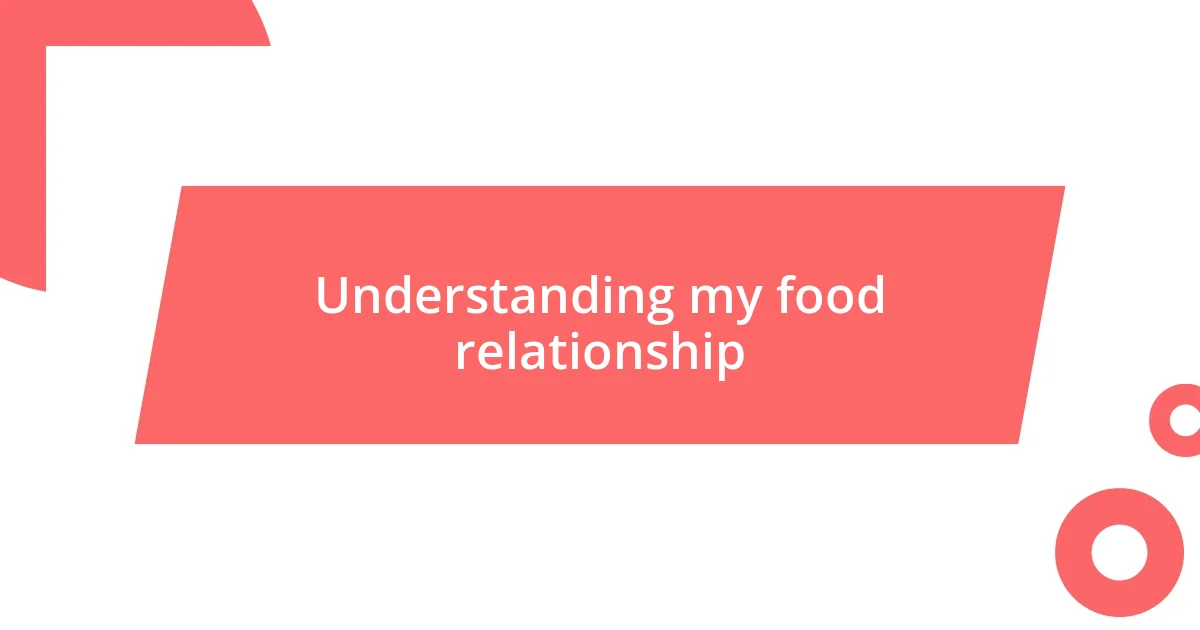
Understanding my food relationship
Understanding my relationship with food has been both enlightening and unsettling. I often found myself reaching for snacks when I was stressed, treating food like a comfort or a reward, rather than nourishment. Reflecting on those moments, I wonder: how many of us use food as a band-aid for deeper emotions?
As I navigated this journey, I realized that certain foods sparked joy while others brought about guilt. For example, my love for homemade cookies isn’t just about the taste; it’s also tied to memories of baking with my grandmother. This connection made me think, how often do we overlook the emotional ties that influence our eating habits?
I began to keep a food diary, noting not just what I ate but how it made me feel. It became clear that my cravings were often a response to emotions rather than hunger. This revelation was a turning point—studying my behaviors revealed patterns that I previously ignored, prompting me to ask myself: what if I began to honor my feelings in healthier ways?
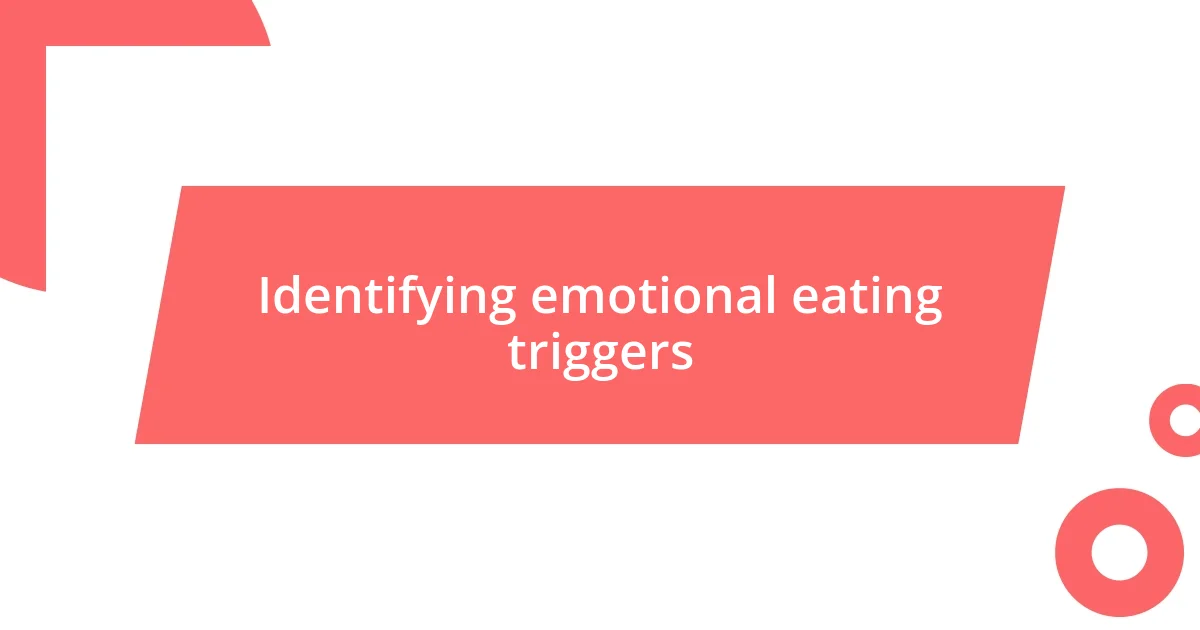
Identifying emotional eating triggers
Identifying emotional eating triggers requires a level of introspection that can be quite revealing. I remember a particularly tough week at work when I sifted through endless reports and deadlines. Each time I faced a challenging task, I reached for chips and chocolate, almost instinctively. It was then I realized that my cravings were less about hunger and more about seeking comfort in the chaos of my daily life.
To effectively identify your own emotional eating triggers, consider these aspects:
- Stress levels: Notice how stress impacts your cravings. Are you more likely to snack during stressful times?
- Boredom: I found myself mindlessly munching when I had nothing to occupy my mind. It’s about recognizing that empty moments can lead to empty calories.
- Emotional states: Pay attention to your feelings before reaching for food. Are you sad, lonely, or anxious?
- Social scenarios: Think about how gatherings influence your eating habits. I often overindulged during celebrations, using them as an excuse to eat beyond my needs.
- Routine habits: Take note of any patterns, like automatically grabbing a bite while watching TV or scrolling on your phone. Recognizing these can help you break the cycle.
By observing these triggers, I began to understand the underlying emotions that dictated my choices, allowing me to make more mindful decisions.
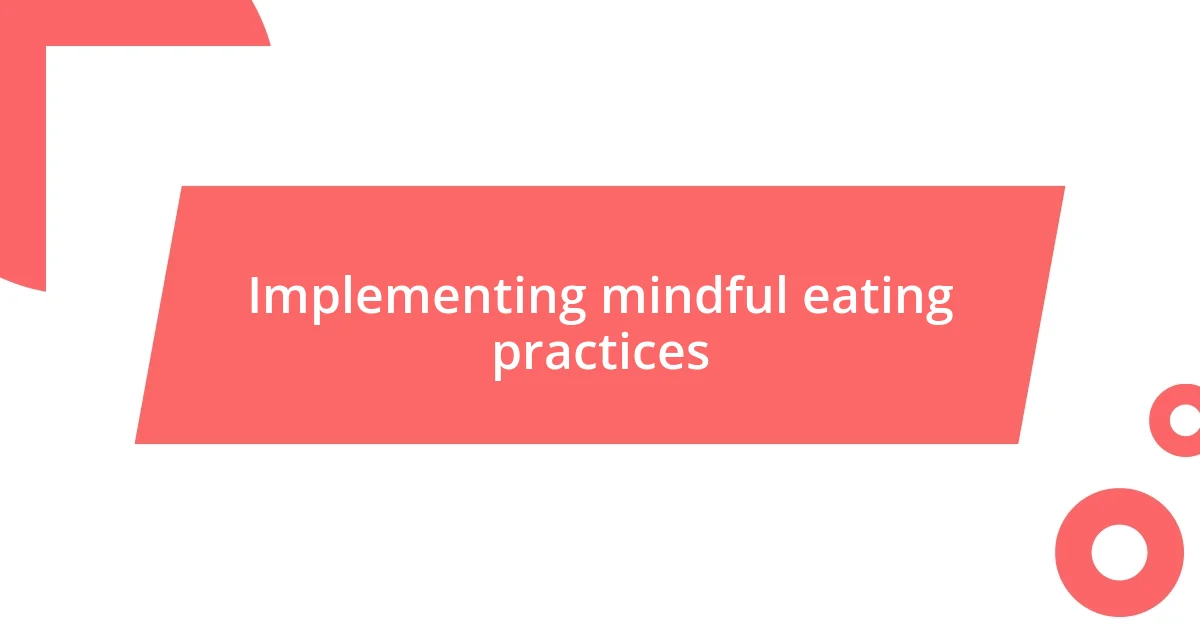
Implementing mindful eating practices
Implementing mindful eating practices has been transformative in my journey toward a healthier relationship with food. One of my favorite techniques is the “pause practice,” which involves taking a moment to check in with myself before meals. I ask, “Am I truly hungry, or is there an emotional need behind this?” By doing this, I’m able to separate physical hunger from emotional cravings. It’s surprising how often I found myself reaching for food out of habit rather than necessity.
Another significant change I embraced was slowing down while eating. I used to rush through meals, often feeling full and unsatisfied. Now, I intentionally savor each bite. This practice not only enhances my enjoyment of food but also allows me to pay attention to how different foods make me feel. I recall a dinner where I took small bites of a rich pasta dish, relishing the flavors instead of inhaling it. I found myself full sooner, which surprised me and helped me recognize when I’ve had enough.
Incorporating gratitude into my meals has also played a crucial role. Before I eat, I take a moment to appreciate where my food comes from and the work that went into it. This mindful gratitude creates a deeper connection to what I’m consuming and fosters a sense of respect for my body. I often think back to family dinners growing up, where sharing and appreciating our food brought us closer together. It’s fulfilling to bring that practice back into my own life.
| Mindful Eating Practices | Description |
|---|---|
| Pause Practice | Involves taking a moment to assess true hunger before eating to distinguish physical needs from emotional triggers. |
| Slowing Down | Eating slowly allows for savoring the flavors and recognizing fullness signals from the body. |
| Gratitude | Taking a moment to appreciate the food before eating creates a connection and respect for nourishment. |
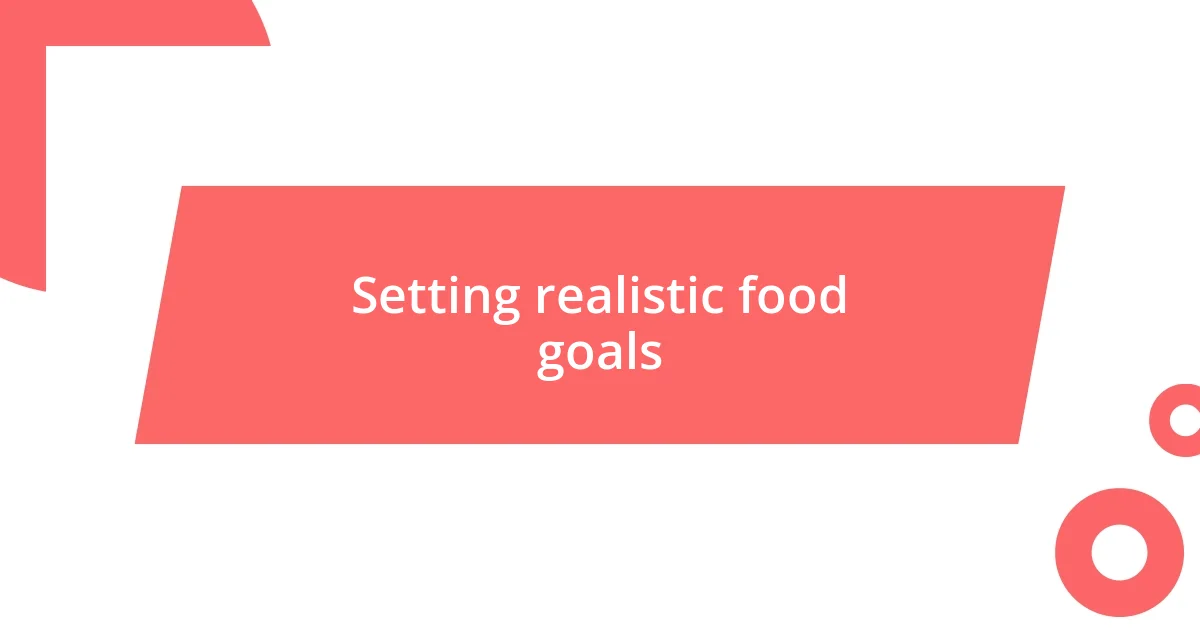
Setting realistic food goals
I’ve found that setting realistic food goals has been a crucial part of my transformation. When I first tried to overhaul my diet entirely, I felt overwhelmed and set myself up for failure. Instead, I began with small, attainable targets—like incorporating an extra serving of vegetables into my meals each week. Surprisingly, this simple change made me feel accomplished and motivated to tackle bigger adjustments.
One method I use is the SMART criteria for goal-setting, which stands for Specific, Measurable, Achievable, Relevant, and Time-bound. For instance, instead of saying, “I want to eat healthier,” I might say, “I will include two servings of fruit in my diet every day for the next month.” This makes my goal tangible and easier to measure. Have you ever felt the weight of vague goals? That’s something I can relate to; when I defined specific intentions, I noticed a boost in my confidence, too.
I’ve also learned to be gentle with myself when goals don’t pan out perfectly. Life happens, and that’s okay. If I missed a week of my fruit goal, I reminded myself that progress is a journey, not a destination. Acknowledging that setbacks do not equal failure has helped reduce the pressure I once felt. Instead of getting discouraged, I treat each day as a new opportunity to strive for balance, which has made my relationship with food feel less like a strict regimen and more like a enjoyable exploration.
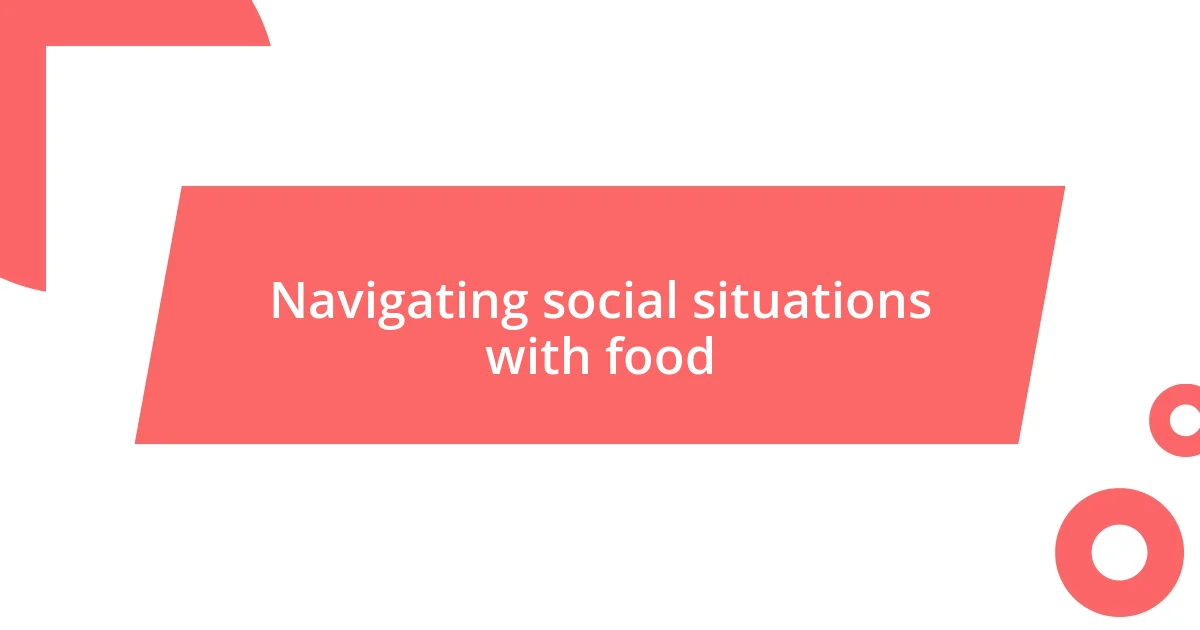
Navigating social situations with food
Navigating social situations with food can often feel like walking a tightrope. I remember attending a friend’s birthday party where the table was overflowing with tempting treats. Instead of indulging mindlessly, I focused on my choices. I decided to enjoy a small slice of cake while chatting with friends, consciously savoring each bite. It was a joyous moment, allowing me to relish the experience without guilt.
What I’ve learned is that it’s important to communicate my food preferences with those around me. During family gatherings, I openly talked about my desire to make healthier choices. Surprisingly, my relatives were supportive. It made me realize that when I express my needs, it fosters understanding and can even spark conversations about health among others. Have you ever felt worried about disappointing someone with your food choices? I felt that way initially but found that honesty often leads to deeper connections.
I also find it valuable to embrace the idea of moderation. In social settings, I allow myself treats, but I pair them with a sense of mindfulness. At a recent BBQ, I filled my plate with a small portion of everything, opting for grilled veggies alongside my burger. This balance let me enjoy the flavors while staying attuned to how my body felt. Ultimately, navigating food in social situations is about making intentional choices that align with my newfound relationship with food.
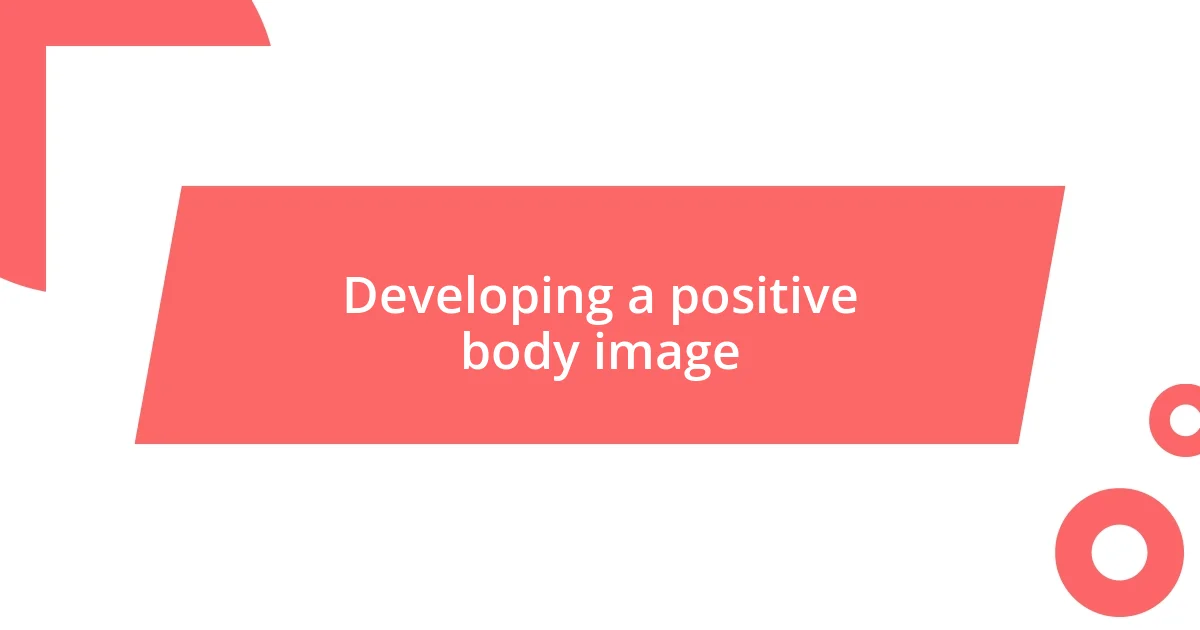
Developing a positive body image
Developing a positive body image has been a transformative journey for me. I remember standing in front of the mirror, nitpicking every flaw and feeling disheartened. One day, I simply decided to shift my perspective; instead of focusing on what I didn’t like, I started appreciating what my body could do. Each day, I began to recognize my body’s strengths, like the energy it provided to complete a yoga session or how it allowed me to explore the outdoors. Have you ever considered how much your body has achieved? This reflection was a game-changer for me.
It’s interesting how small affirmations can create significant shifts in mindset. I began writing down three things I liked about my body each morning. At first, it felt a bit silly, but over time, it morphed into an empowering ritual. I noticed how this simple act helped me carve out a sense of gratitude for my body, fostering a deeper connection rather than a critical one. I can genuinely say that embracing these positive affirmations made a profound difference in how I viewed myself in photographs or while getting dressed. Have you ever tried something like this?
A big part of my transformation also involved surrounding myself with positive influences. I started unfollowing accounts on social media that triggered negative thoughts and instead sought out those that celebrated diverse body types. This exposure redefined my idea of beauty, showing me that our bodies come in all shapes and sizes. It encouraged me to embrace my individuality rather than conform to societal standards. As a result, I’ve found a newfound appreciation for my body, which feels incredibly liberating. Isn’t it fascinating how the right environment can spark such a significant change in perception?
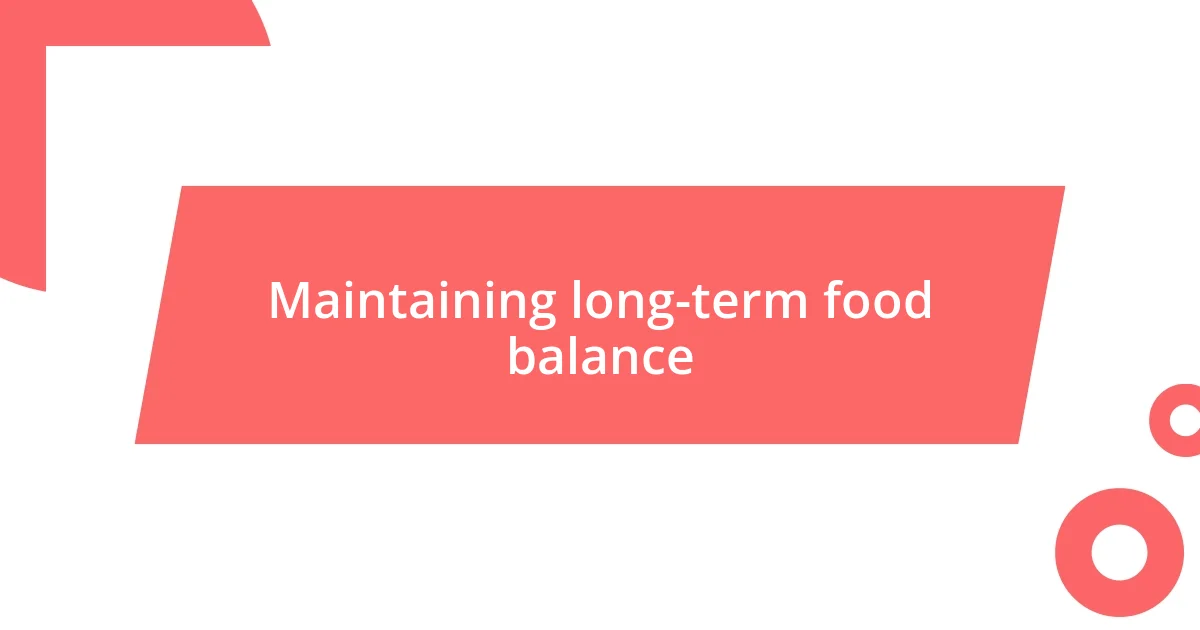
Maintaining long-term food balance
Maintaining long-term food balance is a journey rather than a destination. I’ve learned that flexibility is crucial; last week, I found myself at a spontaneous brunch with friends. I allowed myself to indulge in a creamy avocado toast topped with poached eggs. Instead of feeling guilty afterward, I relished the moment and reminded myself that this one meal wouldn’t derail my overall goals. Isn’t it freeing to think that a single choice doesn’t define our relationship with food?
I also pay attention to my body’s signals as a way to cultivate balance. When I feel full, I pause before reaching for another serving. Once, I pushed through a meal because it looked appealing, only to feel uncomfortable afterward. This experience taught me to listen to my instincts instead of mindlessly finishing everything on my plate. Have you ever felt that heavy feeling after overeating? Being attuned to my body has made eating less about rules and more about enjoyment.
In addition, I embrace the concept of variety to keep my meals exciting and nutritious. I remember a time when my dinner rotation became stale, leading to a sense of monotony. To change this, I began exploring new recipes and experimenting with seasonal produce. Now, I look forward to meal prepping each week, creating colorful bowls that are not only balanced but visually appealing. Who doesn’t get excited by a vibrant plate of food? By incorporating a spectrum of flavors and nutrients, I’ve turned my relationship with food into a joyful and sustainable practice.















